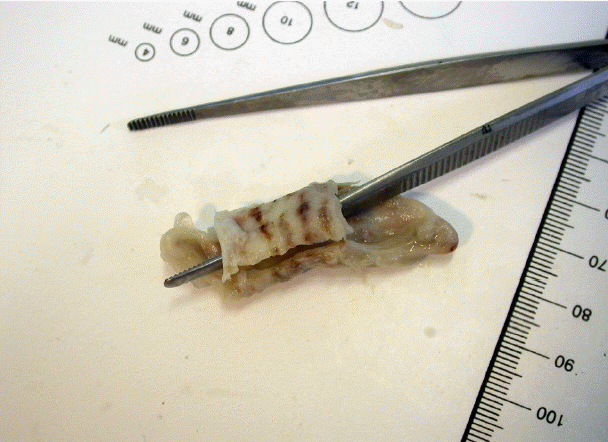Obstructive Fibrinous Tracheal Pseudomembrane: An Update
Article information
Dear Editor,
We read with interest the excellent report of Ha et al.,[1] because we faced another case[2] of this poorly understood pathology.
Obstructive fibrinous tracheal pseudo-membrane (OFTP) is a rare, but potentially lethal pathology which develops after endotracheal intubation even of short duration (24 hours in our case). As outlined by Ha, most of reported cases had a clinical presentation characterized by dyspnea and stridor, due to a valve-like tracheal obstruction by a partial detachment of the pseudo-membrane, which occurred early after extubation. In the case reported by Ha et al.[1], the patient complained a mild dyspnea probably related to the ongoing development of the right lower lobe atelectasis, but certainly unrelated to the presence in the upper trachea of the pseudo-membrane. As a consequence, the authors speculated that the OFTP presence was asymptomatic and its diagnosis has been fortuitous, condition only two-time described before.[3] We would like to point out that the diagnosis of OFTP in our case was even more fortuitous, because of its spontaneous expectoration after cough triggered by an attempt of nasogastric tube insertion; the diagnosis occurred after a long asymptomatic time post-extubation (four days). Spontaneous expectoration has been reported only once before[4] and, as far as we know, it is the only way to obtain a detach of the OFTP in its integrity like a trachea’s mold (Fig. 1). We agree with Ha about the difficulty in finding clear risk factors of OFTP formation since the rarity of reported cases. Hyperinflation of endotracheal cuff, so far thought to be the major risk factor, in the case by Ha et al.[1] was absent (endotracheal cuff pressure was checked routinely and adjusted) as well as others known risk factors. We can ironically conclude that endotracheal intubation is the only known risk factor for OFTP development.
Notes
No potential conflict of interest relevant to this article was reported.
